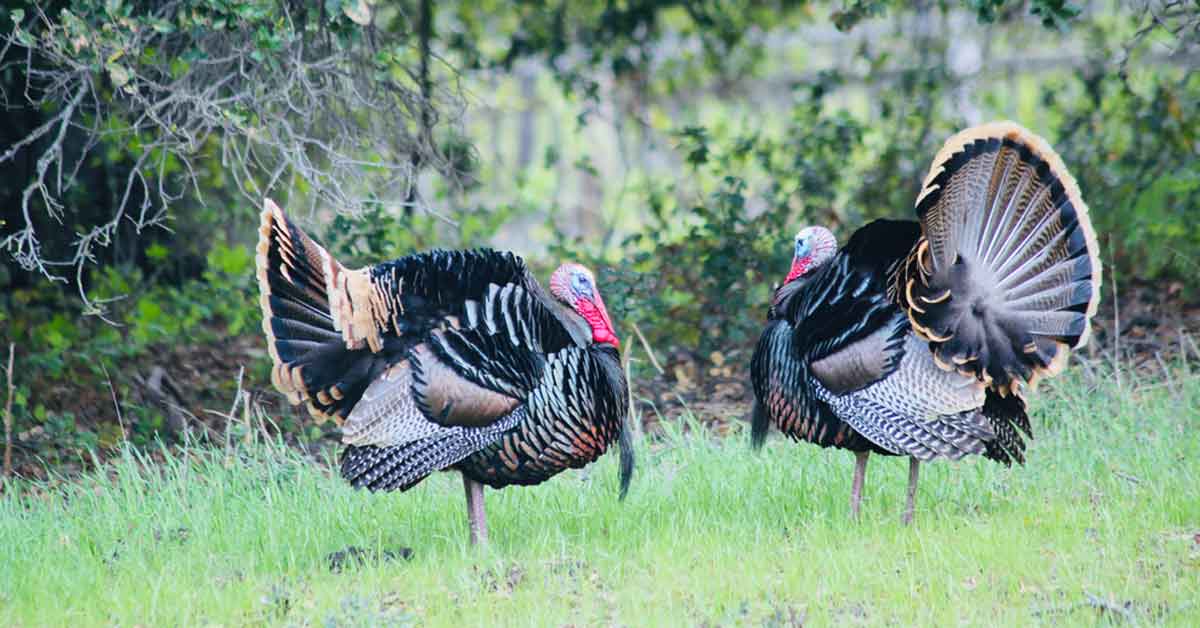
When someone mentions “wild turkeys,” Long Island usually isn’t the first thing that comes to mind. It turns out that Staten Island isn’t the only place with wild turkeys.
Are There Wild Turkeys on Long Island?
Yes, Nassau and Suffolk counties have a combined population of about 6,000 scattered in pockets throughout the island, according to the New York State Department of Environmental Conservation (DEC). The eastern wild turkey is native to New York and the East Coast.
While wild turkeys are native to Long Island, over-hunting combined with development eradicated them from the area in the late 1800s. In the 1990s, the New York State DEC worked with Suffolk County to reintroduce 75 wild turkeys to the Southaven County Park and Hither Hills State Park regions.
By 2009 the number of wild turkeys increased to about 3,000. As a result, New York State began allowing the hunting of wild turkeys that year. Despite that, the overall wild turkey population has doubled. In fact, some experts believe the Long Island wild turkey population is greater than 6,000.
Can You Feed Wild Turkeys in NYS?
In general, experts discourage the feeding of wild animals for a variety of reasons, including making them dependent upon the feeding and making the animals more comfortable with human interaction. However, New York State allows the feeding of wild turkeys so long as the food is not used to lure turkeys during hunting season and deer are not attracted to the food.
What Is a Male Turkey Called?
Male turkeys are referred to by one of two terms. The first is “Toms,” which is why the giant turkey float in the Macy’s Thanksgiving Day Parade is named “Tom Turkey.” It’s the oldest recurring float in the parade and, arguably, the most famous.
Male turkeys can also be called “gobblers.” Young male turkeys are often called “Jakes.” Adult female turkeys are called “hens,” with the juvenile female turkeys referred to as “Jennies.”
What Is the Life Expectancy of a Wild Turkey?
On average, a turkey hen has a life expectancy of three years, and a Tom’s is four years. Predators are usually blamed for a wild turkey’s life expectancy, but Mark Hatfield, director of conservation services for the National Wild Turkey Federation (NWTF), said that roaming is the bigger issue. Turkeys with an abundant food and water source live longer. Those that need to roam far for food expend more energy and are at greater risk of encountering a predator.
Are Turkeys Friendly?
That depends upon the type of turkey. Some types of turkeys have been domesticated to a level where they can be kept as pets. Turkeys, in general, are social creatures, so this type of turkey can be friendly to humans.
Wild turkeys are another matter and should be left alone. Wild turkeys in suburban or urban areas can be rather aggressive toward humans – especially young turkeys and mature males during the mating and breeding season. They’ve even been known to chase children.
Do Turkeys Recognize Humans?
Yes, turkeys can recognize human faces. When it comes to docile turkeys, that means they’ll come running to their human friends for pets and cuddles. For wild turkeys, that means they can remember someone who harassed them or who they felt was a possible threat to their family.
Are Turkeys Dinosaurs?
In a way, yes… turkeys are dinosaurs. While all birds are related to or derived from dinosaurs in some fashion, researchers at the University of Kent found that both chickens and turkeys experienced “fewer gross genomic changes than other birds” in terms of evolving from dinosaurs.
Arrow Exterminating Are Pest Control Experts
If you have a problem with wild turkeys on your property, contact the Department of Environmental Conservation – and for every other kind of pest and vermin, call the experts at Arrow Exterminating. From ticks to termites and much more, our professional services will provide the peace of mind you need. To get started, contact Arrow Exterminating today.





